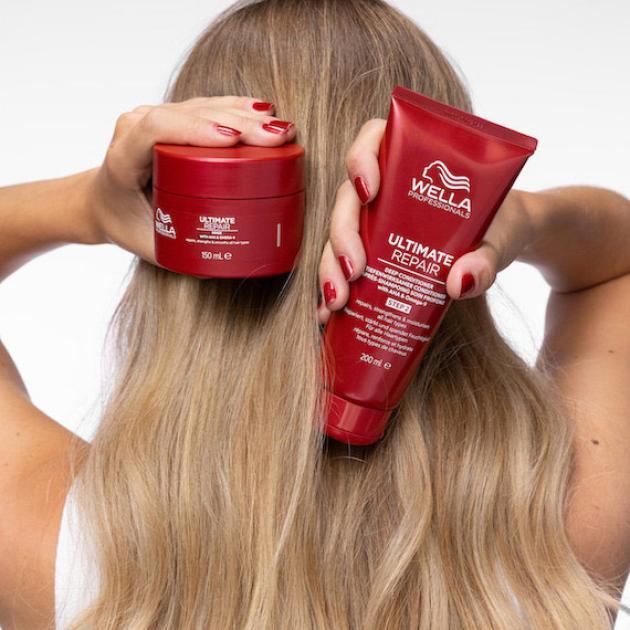What are Split Ends? Plus 11 Ways to Prevent Them
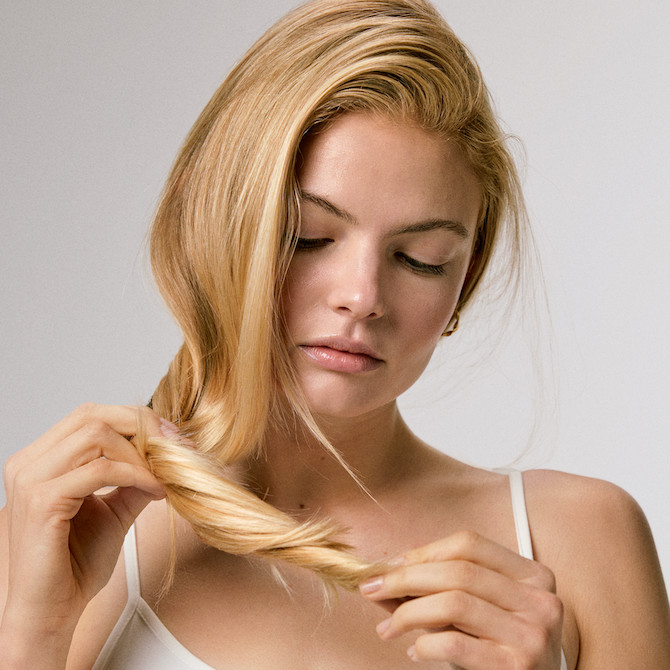
Dealing with split ends? Even the healthiest hair can be prone to splits, and usually it's a sign that you're overdue a quick trim. But if those splits are getting excessive or you're noticing they've worked their way higher up the hair shaft, it's time to take action. Consider this your everything guide to fixing every type of split ends...
How Do I Know if I Have Split Ends?
Look out for forked hairs through the ends. They usually feature a double split that looks like a 'V' or 'Y' shape, and is caused by the hair cuticle – your hair's protective layer – becoming damaged or broken. As we mentioned above, it's common to have a few split ends when you haven't been for a trim in a while, but if they're excessive and reappear soon after a cut, it's time to take further action.
What Causes Split Ends?
Before we get into the fixes, it's helpful to know some of the key causes of split ends, so you can tweak your hair regimen and minimize future breakage. So, avoid these habits...
- Too-tight hairstyles with elastic bands that split hair through the lengths – especially the crown area.
- Mechanical damage triggered by daily wear and tear, such as excessive brushing or rubbing hair dry after washing.
- Extreme weather conditions, such as dry, chilly winds or scorching temperatures.
- Heat damage, often caused by using hot styling tools without a heat protectant.
- Lack of moisture through your hair, making a nourishing wash day regimen essential.
- Chemical hair products, such as perms and relaxers.
How to Prevent Split Ends
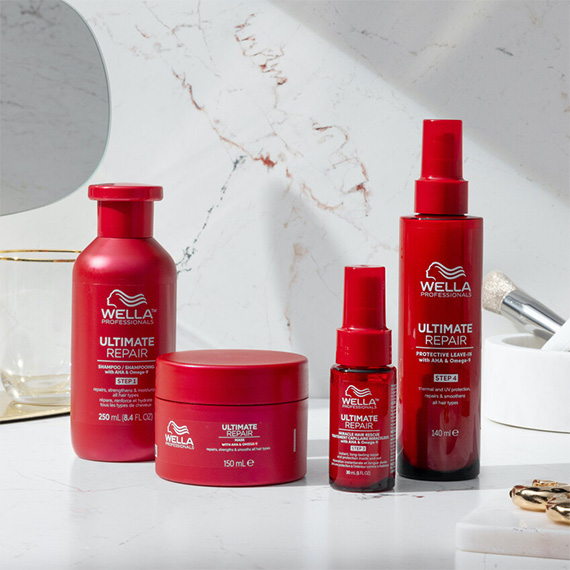
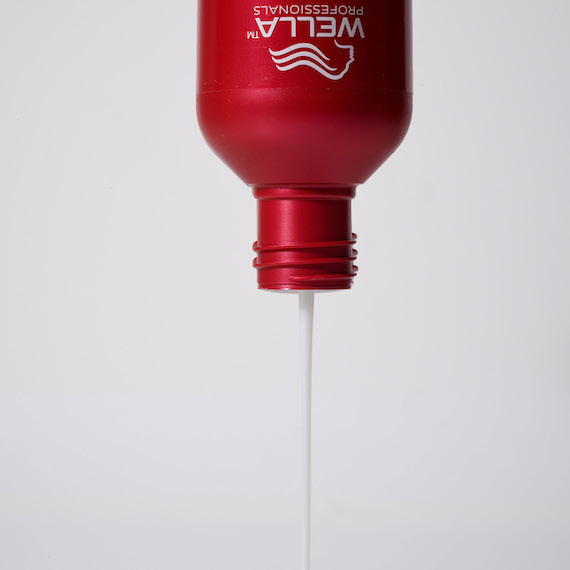
1. Wash With a Nourishing Shampoo
Healthy hair starts with the shampoo you choose. It needs to purify the scalp, lengths and ends, while being gentle enough to not strip away the natural oils that make up hair's protective barrier. That's why, to prevent split ends, we always recommend ULTIMATE REPAIR Shampoo. It's our most nourishing formula, harnessing AHA to replenish the hair fiber, and Omega-9 fatty acid to smooth the outer layer of strands. Plus, not only does it detox locks from harmful metals – the kind you'll find in the air and the water you wash with – it also kick-starts the bond-rebuilding process. Massage the luxurious lather through wet hair, then follow it with the creamy-yet-lightweight ULTIMATE REPAIR Conditioner. Together, they rinse completely clean to give all hair types 12x smoother hair* with 99% less breakage**.
2. Use a Hair Mask Weekly
While the ULTIMATE REPAIR Shampoo and ULTIMATE REPAIR Conditioner are go-tos for everyday washing, we recommend using a hair mask once per week to replenish brittle hair. ULTIMATE REPAIR Mask is one of the most powerful damaged hair products around, delivering a dose of nourishment wherever hair needs it most. This is thanks to the innovative adaptive technology, which detects the areas where strands are craving the most care, then delivers targeted repair to keep hair healthy from root to tip. Before you apply it to shampooed hair, squeeze out excess water, so tresses can absorb the mask's replenishing ingredients. Then, leave on for five minutes before rinsing thoroughly.
3. Dry Hair With a Microfiber Towel
Friction is one of the many causes of hair breakage and, in turn, pesky split ends. But because combing, brushing, styling and drying are unavoidable, your goal is to lessen the stress they put on strands. One easy way is to swap your traditional towel for a microfiber towel, which is softer and gentler on locks that have just been cleansed and conditioned. After washing hair, use it to blot – not rub – water out of your hair through roots, lengths and ends. If you have curly hair, you could then wrap locks up high on your head for a body-boosting air-drying technique called 'plopping'.
Don't have a microfiber towel to hand? Use a soft cotton t-shirt, which will absorb the moisture while still being gentle on strands. Press it through roots and lengths to soak up excess water – no friction necessary.
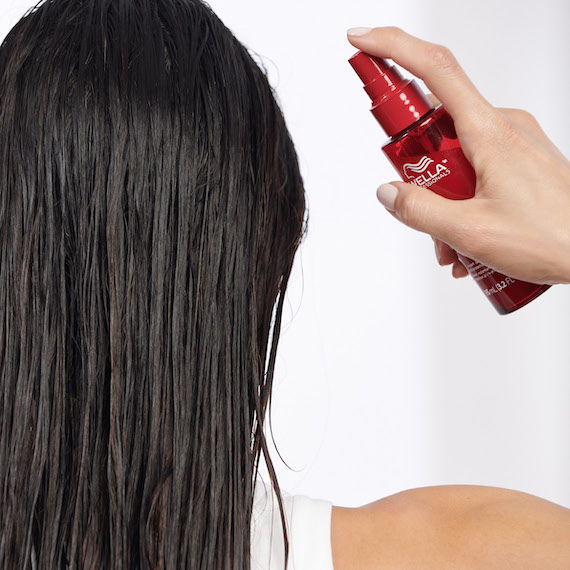
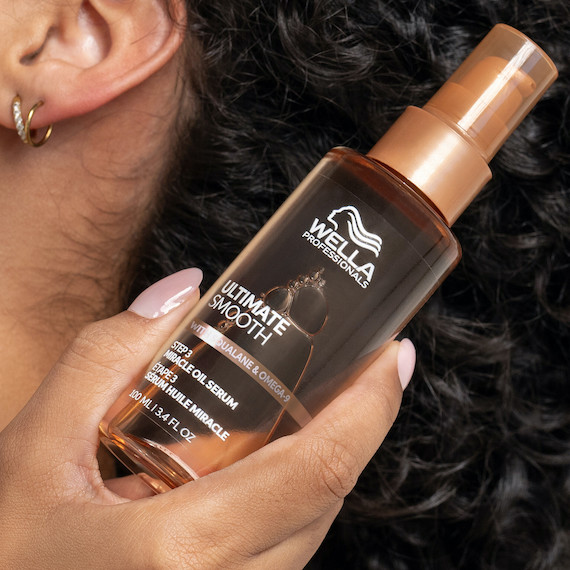
4. Repair Damaged Hair in 90 Seconds
Whether it's caused by flat irons, UV rays, chemical treatments or wear and tear, hair damage is the ultimate culprit when it comes to split ends. So halt it in its tracks with a deep conditioning treatment that fortifies stressed strands. ULTIMATE REPAIR Miracle Hair Rescue repairs hair damage in 90 seconds³, making it your quick solution for stressed strands. Potent and powerful, yet wonderfully weightless, it's designed to be misted through clean, towel-dried hair from roots to ends, and then – a crucial step – allowed to absorb for 90 seconds.
5. Use a Hair Oil to Treat Brittle Hair
One of the reasons dry hair is so prone to splitting is because of a lack of moisture. When natural protective oils are stripped from the hair shaft due to damage, you're left vulnerable to brittleness and breakage. So, after applying ULTIMATE REPAIR Miracle Hair Rescue, top up protection with a deeply nourishing hair oil. ULTIMATE SMOOTH Miracle Oil Serum is your go-to; a hair serum-meets-oil that nourishes in 30 seconds for smoothness that lasts up to 3 days⁴. Powered by Omega-9 and Squalane, it feels luxe to the last drop, giving all hair types – from fine to coarse – the dose of TLC they crave.
6. Brush Your Hair Gently From Tip to Root
Yes, you read that correctly. Dragging your hairbrush from root to tip doesn't only put you at risk of hair breakage; it can also split the shaft, leading to a stressed-out, ragged look. The right way to brush your hair sees you start at the tips, gently teasing knots away. Gradually, you can start brushing higher and higher, until you've detangled every strand. Try this technique when distributing hair conditioner or hair masks evenly too. Apply the treatment to wet hair first, then use a wide-tooth comb to delicately work through knots from the bottom to the top.
7. Avoid Tight Ponytails with Elastics
The ponytail might be one of the most effortless and easy-to-wear hairstyles around, but beware: tight elastic can put stress on fine strands, resulting in splits and breakage. Wear locks loose when you can, and when you can't, stick to clips or soft, silky scrunchies. Over time, you'll notice fewer split hairs, and that scrunchie will keep your look on trend, too.
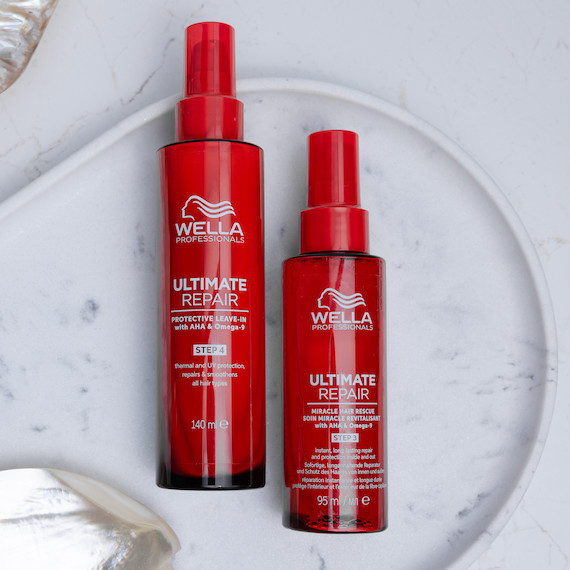
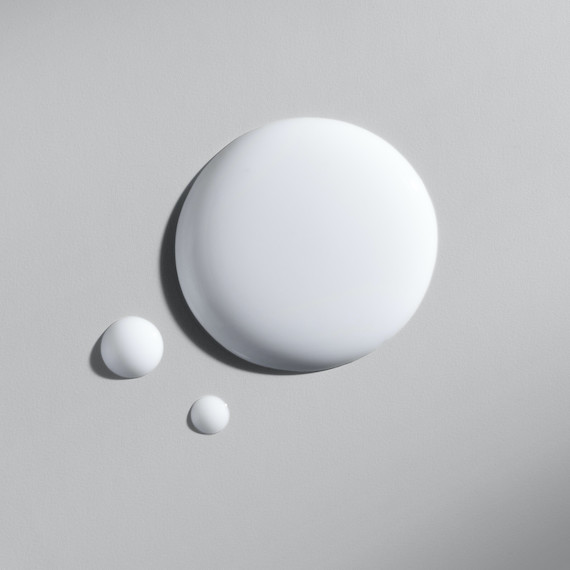
8. Protect Your Hair from Sun Damage and Extreme Heat
From hair dryers, to curling irons, to flat irons – heat styling causes damage to hair when it's not protected. They strip away natural oils from the cuticle, leaving locks fragile and paving the way for split ends. So, before you start styling with your favorite hot tools, you need a hard-working heat protectant. For nourishment and shielding in one, use ULTIMATE REPAIR Protective Leave-In. The silky cream works to safeguard strands against the five most common types of hair damage: frizz, UV exposure, breakage, friction and, of course, heat. In fact, it serves up 450-degree heat protection, all while reducing frizz. A true styling staple.
9. Sleep With a Silk Pillowcase
Did you know? Even the softest cotton pillowcases can ruffle up the hair cuticle, leading not just to frizz (hello, bedhead), but to brittleness and breakage, too. That's why we recommend silk pillowcases to everyone with fragile locks. But you don't have to stop there: for curls and coils, silk sleep caps also make a noticeable difference to the look and feel of hair.
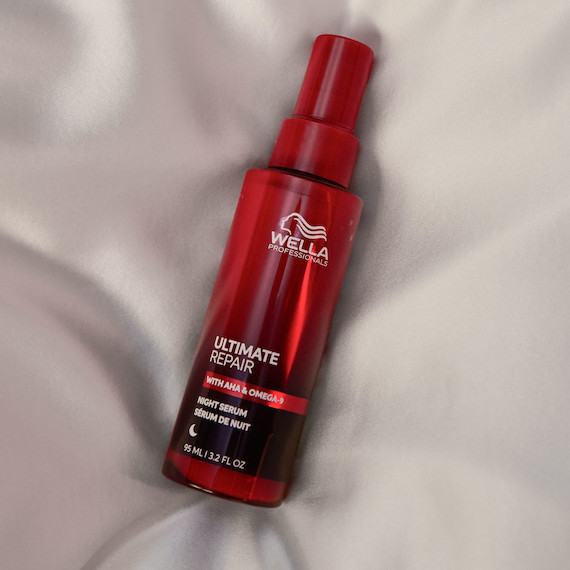

10. Apply a Night-Time Hair Serum
Even with a silk pillowcase, friction while you sleep is one of the leading causes of hair damage. When you toss and turn through the night, your hair becomes roughened and tangled, putting stress on the delicate hair shaft. That's exactly why we developed the ULTIMATE REPAIR Night Serum, with a weightless gel texture that sinks right in to deliver protection while you sleep. Smooth it through your lengths and ends before you go to bed, and you'll wake up to 6x smoother hair⁵ that's easier to tame.
11. Protect Hair When You Swim
The chlorine in pool water and the salt in seawater are bad news for your hair. Ultra-harsh and drying, it's no wonder locks can feel straw-like and brittle when you return from a vacation. So, to put a stop to sea and chlorine damage on your next getaway, try soaking – and we mean soaking – your hair with clean water before you go swimming. Hair is like a sponge; it can only hold so much moisture before hitting the point of saturation. By drenching it with fresh water, you create an invisible barrier that stops chlorine and salt getting in. Level it up by adding a drop of conditioner to lengths and ends for extra protection.
How to Disguise the Appearance of Split Ends
1. Apply a Styling Cream to Damp Hair
A hydrating styling cream or balm acts like a temporary ‘glue' to smooth split ends. Apply it to just-washed, damp locks before air-drying or blow-drying, and enjoy a silky glow. If you're using heated tools, apply ULTIMATE REPAIR Protective Leave-In as your base (thinnest products go first), then smooth EIMI Flowing Form just through the mid-lengths and ends, focusing on the most split sections.
2. Use a Hair Oil to Smooth the Splits
The smoother your hair looks, the less visible those pesky splits will be. So, follow a gloss-boosting regimen that smooths and seals in nourishment, like ULTIMATE SMOOTH. The Miracle Oil Serum will give you the mirror-like finish you're looking for, whether you apply it to damp hair after washing or dry hair on those in-between days. You only need the tiniest amount to give tired ends a touch of gloss. Pump it into the palms of hands, then gently massage it through just-styled locks for instant glow.
3. Tame Flyaways with Hairspray
When hair splits, flyaways can happen. They'll mess up even the most groomed ‘do, but a simple trick with hairspray and your brush or a spoolie will tease them back into place. All you have to do is mist a light hairspray onto the brush or spoolie, then sweep and tame the flyaways into place. Make sure you do it while the spray is still tacky. Simple.
How to Get Rid of Split Ends
There's only one way to really get rid of split ends, and that's by cutting them off. No matter if they're inches long or found just through the tips, a thorough trim is needed to restore a tidy shape. When the splits go far up the hair shaft, consider shorter cuts, like a pixie crop or modern bob. The latter can even be worn long (heard of ‘the lob'?) if you're worried about losing too much length.
But if it's just the ends that need a snip, try the Cut & Seal Service. It's like an invisible cut, which simply targets the splits and takes off as little length as possible. You (if you’re a hairdresser) or your stylist will trim off breakage through the hair shaft and the ends, before washing with the ULTIMATE REPAIR Shampoo and ULTIMATE REPAIR Conditioner or ULTIMATE REPAIR Mask. To ‘seal’ strands ULTIMATE REPAIR Miracle Hair Rescue is then applied from root to tip, followed by ULTIMATE SMOOTH Miracle Oil Serum to prep strands for styling.
By booking it in regularly, you can keep on top of split ends as and when they happen, allowing you to keep them at bay while maintaining your chosen style from season to season. Just make sure you book in that subtle trim every four to six weeks. Goodbye, split ends.
Your Split Ends FAQs – Answered
Do Split Ends Stop Hair Growth?
Because hair growth starts at the root, split ends won't stand in your way if you're growing out your hair. However, if ends are wispy and frayed, this can make hair appear shorter than it actually is. Plus, the higher up splitting hair goes, the more your hairdresser will need to trim off. So, if long, luscious locks are your goal, it's important to take care of split ends first.
Do People with Curly Hair Have More Split Ends?
Curly and coily hair types tend to be drier by nature, partly due to the way a natural oil called sebum protects and moisturizes your hair. Sebum works its way from the hair follicles down to the ends of your hair, and the shorter and straighter your hair is, the easier its journey will be. But the beautiful shape of textured hair can make this process trickier. Sebum has to wind through every zag and ringlet, and doesn't always make its way to the ends. As a result, curly and coily hair may be drier, brittler and more prone to hair breakage, but by keeping lengths nourished with a hair oil, like ULTIMATE SMOOTH Miracle Oil Serum, you can help to supplement the natural oils. Work a few drops through the mid-lengths and ends of your curls or coils on hair wash day, then top it up through dry hair in between washes.
How Often Should Split Ends Be Trimmed?
To keep on top of split ends, we recommend booking in a trim at your nearest Wella salon every 6-8 weeks. Your hair stylist will be able to advise on the best cut schedule to suit your needs. Don't forget to follow the steps above to prevent future damage; in combination with regular trims, you'll soon see big changes in the look and feel of your hair.
Is it OK to Break Split Ends?
Don't do it. As tempting as it might be to pull apart those splitting hairs, snapping off the breakage can actually leave hair strands thinner, while causing damage to the cuticle. Sure, it might mean one less split end through the lengths of hair, but trimming is the best and kindest way to tidy up any ragged tips.
What Happens if You Don't Trim Split Ends?
Split ends won't just close up or vanish. If you skip a trim, they'll stick around, and the splits could even work higher up the hair shaft, leaving locks looking wispy and thin. Hair may also appear to stop growing, although that's not truly the case. What's really happening is that, as hair grows from the roots, the ends are breaking off, so the length stays the same. That's why it's important to keep up with regular trims – even when you're growing hair out.
Looking for more ways to level up your hair care routine? Then check out Wella's virtual consultation tool. Like having your hairstylist on 24/7 speed dial, it builds your bespoke hair care regimen in minutes.
¹ Vs. non-conditioning shampoo.
² When using ULTIMATE REPAIR Miracle Hair Rescue. Instrumental test versus non-conditioning shampoo.
³ When using ULTIMATE REPAIR Miracle Hair Rescue.
⁴ When using ULTIMATE SMOOTH Miracle Oil Serum, if unwashed for 3 days, vs. untreated.
⁵ Vs. non-conditioning shampoo.



